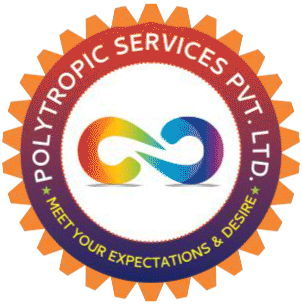ABOUT THE DATABASE CONCEPT:
A database is an organized collection of structured information, or data, typically stored electronically in a computer system. A database is usually controlled by a database management system (DBMS). Together, the data and the DBMS, along with the applications that are associated with them, are referred to as a database system, often shortened to just database. Data within the most common types of databases in operation today is typically modeled in rows and columns in a series of tables to make processing and data querying efficient. The data can then be easily accessed, managed, modified, updated, controlled, and organized. Most databases use structured query language (SQL) for writing and querying data.
An Oracle database is a collection of data treated as a unit.
The purpose of a database is to store and retrieve related information. A database server is the key to solving the problems of information management. In general, a server reliably manages a large amount of data in a multiuser environment so that many users can concurrently access the same data. All this is accomplished while delivering high performance. A database server also prevents unauthorized access and provides efficient solutions for failure recovery. Oracle Database is the first database designed for enterprise grid computing, the most flexible and cost effective way to manage information and applications. Enterprise grid computing creates large pools of industry-standard, modular storage and servers. With this architecture, each new system can be rapidly provisioned from the pool of components. There is no need for peak workloads, because capacity can be easily added or reallocated from the resource pools as needed. The database has logical structures and physical structures. Because the physical and logical structures are separate, the physical storage of data can be managed without affecting the access to logical storage structures.
The MySQL server provides a database management system with querying and connectivity capabilities, as well as the ability to have excellent data structure and integration with many different platforms. It can handle large databases reliably and quickly in high-demanding production environments. The MySQL server also provides rich function such as its connectivity, speed, and security that make it suitable for accessing databases.
The MySQL server works in a client and server system. This system includes a multiple-threaded SQL server that supports varied backends, different client programs and libraries, administrative tools, and many application programming interfaces (API)s.
MySQL is an open source relational database management system based on SQL. It was designed and optimized for web applications and can run on any platform. As new and different requirements emerged with the internet, MySQL became the platform of choice for web developers and web-based applications. Because it’s designed to process millions of queries and thousands of transactions, MySQL is a popular choice for ecommerce businesses that need to manage multiple money transfers. On-demand flexibility is the primary feature of MySQL. MySQL is the DBMS behind some of the top websites and web-based applications in the world, including Airbnb, Uber, LinkedIn, Facebook, Twitter, and YouTube.
PL/SQL stands for “Procedural Language extensions to the Structured Query Language”. SQL is a popular language for both querying and updating data in the relational database management systems (RDBMS). It adds many procedural constructs to SQL language to overcome some limitations of SQL. Besides, PL/SQL provides a more comprehensive programming language solution for building mission-critical applications on Oracle Databases.
This is a highly structured and readable language. Its constructs express the intent of the code clearly.
Also, It is a straightforward language to learn.
This is a standard and portable language for Oracle Database development. If you develop a program that
executes on an Oracle Database, you can quickly move it to another compatible Oracle Database without any changes.
WHO CAN APPLY(ELIGIBILITY):
BCA/BSC-IT/MCA/CS Engineering/IT Engineering
WORKSHOP HIGHLIGHT:
- Learn and interact with one of the respected authorities in the field of Web Development.
- Practical demonstration for each and every module mentioned in course contents.
- All the content mentioned is covered side by side by practical’s.
- Improve your job prospects and get an edge over your counterparts.
- Covers all the basics for development of a client side technology.
- Free tools & software's used by professional designers.
- Study material to each student including books, DVD’s, and software kit.
- Hands on Demonstrations of Latest Animation Techniques & Tools.
- All study material would be provided
- All the necessary software’s would be provided.
- Workshop will be of 12 Hours (2 Days, 6 hrs each day ).
TRAINING METHODOLOGY:
Theory, Practical (Emphasison Practical and Current Market Requirement)
WHO CAN ATTEND:
- College students seeking career in Website Development.
- Person having interest in Designing.
- Education Faculty & Staff.
- Students from any branch can attend the workshop.
CERTIFICATION AND CERTIFICATE POLICY:
Certificate provided in this course would be certified by Polytropic Services and would be provided to the candidates who have attended the classes.
FEES:
